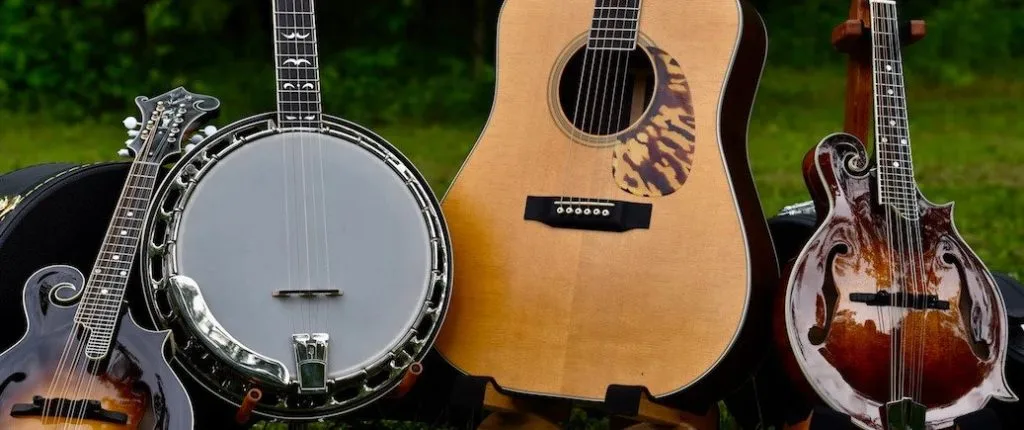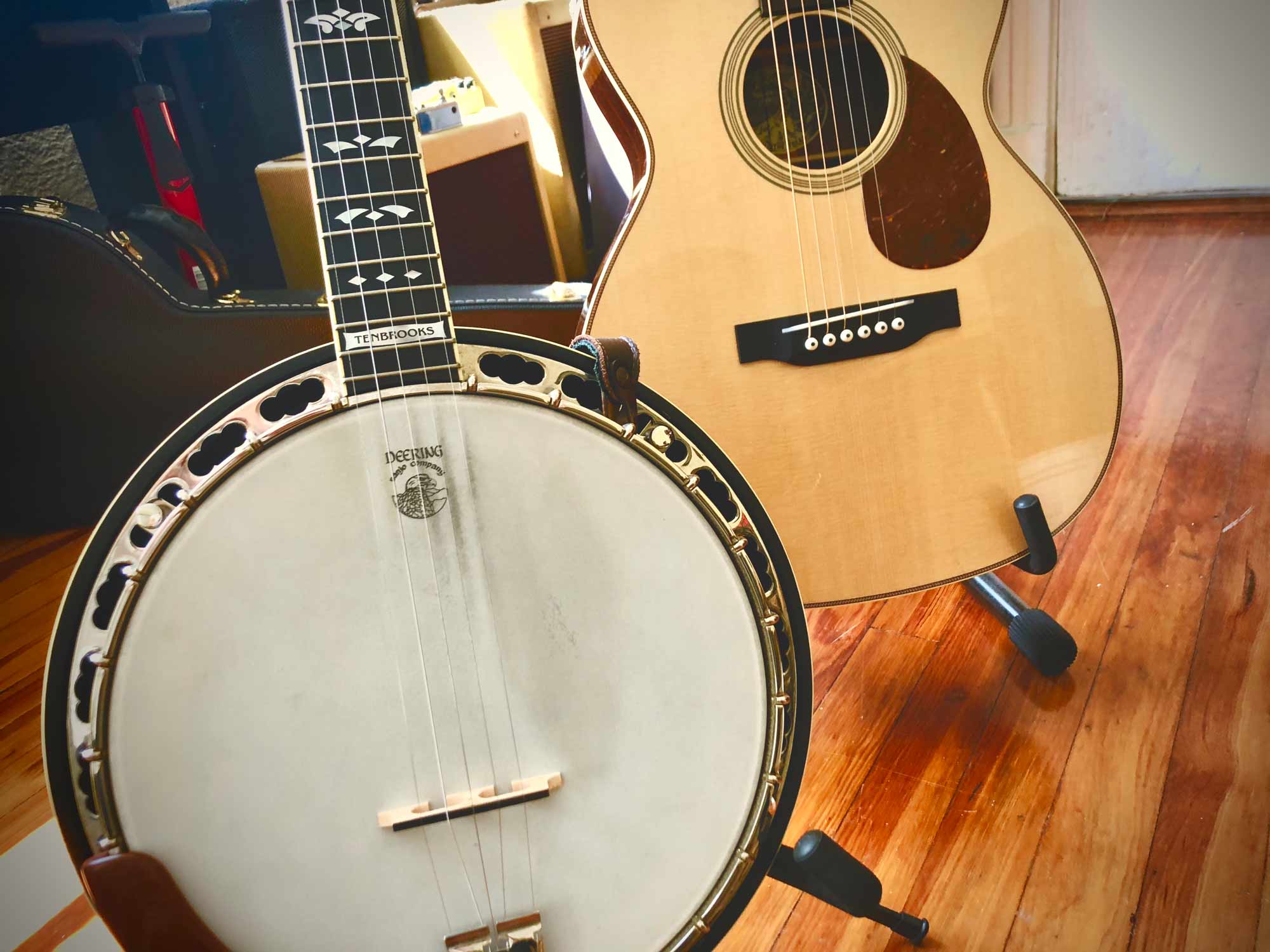Are you struggling to choose between learning the banjo or guitar? As someone who has played both, I know firsthand how daunting this decision can be. Learning a new instrument is always exciting, but it’s important to pick the one that suits your abilities and goals best.
In this article, we’ll tackle the age-old question: Is banjo harder than guitar? We’ll compare and contrast these two beloved string instruments and break down their unique challenges and advantages. Whether you’re a beginner looking for guidance or an experienced musician considering branching out, keep reading to discover which instrument will be your perfect fit!
So, is banjo harder than guitar?
It’s a common debate among musicians and music enthusiasts – is playing the banjo harder than playing the guitar? While both instruments have their own unique challenges, it ultimately depends on personal preference and skill level.
On one hand, the banjo has a smaller fretboard with fewer strings to navigate, making it easier for beginners to pick up. However, its distinct tuning and fingerpicking style can be difficult for some to master. On the other hand, the guitar has a wider range of notes and chords but requires more dexterity in both hands.
Ultimately, whether one instrument is harder than the other is subjective. Both require practice and dedication to become proficient. So instead of focusing on which is “harder,” why not embrace each instrument’s individuality and enjoy learning them both? After all, music should bring joy and creativity rather than competition.
Understanding the Physical Differences Between Banjo and Guitar
When you first pick up a banjo or guitar, the physical differences leap out at you. The banjo, with its circular body and drum-like head, stands in stark contrast to the more familiar shape of a guitar. Banjos often have five strings, though some variations feature four or even six. These strings stretch over a floating bridge that rests on the drumhead, creating that distinct twangy sound. Meanwhile, guitars usually have six strings strung over an elongated wooden body with an elegant neck and rounded shoulders.
Another noticeable difference is in the neck length and fretboard design. Banjos generally sport shorter necks but longer frets compared to guitars. This structure gives them a higher pitch range but also makes finger positioning quite different from what you’d experience on a guitar. On guitars, you’ll find markings like dots or small designs along certain frets which act as visual aids for players; these markers are less common on banjos—or they might appear differently altogether.
– Guitar: Elongated body
– Banjo: Circular body
Guitarists enjoy more fretboard real estate for complex chord shapes and solos while banjo players navigate quicker transitions due to fewer frets per inch.
Exploring these instruments’ unique structures reveals why each produces such distinct sounds—even before you pluck your first string!
Learning Finger Picking Styles: Banjo vs. Guitar
When you explore finger picking styles, the difference between banjo and guitar is quite fascinating. Banjo finger picking often involves a technique called “claw hammer.” In this style, your thumb plays a key role by striking down on the strings while your fingers pluck upward. It’s a rhythmic dance for your hand that creates an infectious beat, almost like tapping into the heart of Appalachian music. The sound is bright and twangy, instantly recognizable and steeped in history.
On the other hand (pun intended), guitar finger picking takes you on a different journey. Using techniques like Travis Picking or Classical Fingerstyle can turn simple chords into lush harmonies and melodies. Your thumb holds down the bass line while your fingers pick out intricate patterns on higher strings. It allows for great versatility—from folk to blues to classical pieces—all at once making it harmonious and full-bodied.
- Claw hammer: Thumb-centric rhythm creating bright sounds.
- Travis Picking: Balanced bass lines with melodic overtones.
Each instrument’s unique approach adds layers to their respective musical landscapes that are as varied as they are beautiful.
Learning these styles opens up worlds of creativity whether you’re strumming along with friends or performing solo.
In essence, mastering either method will give you new tools to express yourself musically in ways words cannot capture fully—each note telling its own story.
Read also: yamaha black guitar
The Learning Curve: Comparing Ease of Mastery between Banjo and Guitar
When diving into the world of stringed instruments, you might find yourself caught between the charming twang of the banjo and the timeless allure of the guitar. The learning curve for each instrument is quite distinct, appealing to different types of learners. Mastering basic chords on a guitar can be more straightforward due to its standard tuning and wide range of instructional materials available. Plus, guitars are versatile across genres—whether you’re into rock, blues, or classical music.
On the other hand, picking up a banjo offers a unique set of challenges and rewards. Its high-pitched sound suits specific styles like bluegrass or folk but may seem less adaptable at first. Banjo playing often involves complex fingerpicking patterns that demand practice but also yield richly textured sounds. Beginners may struggle initially with these techniques compared to strumming simple chords on a guitar; however, once you’ve got those down, playing becomes immensely gratifying.
- The guitar’s accessible resources simplify early learning stages.
- The banjo requires intricate finger movements from day one.
In essence, both instruments offer their own pathways to musical bliss.
Which one calls out to you?
Your journey in mastering either will be uniquely rewarding.

Analyzing the Versatility of Music Genres in Banjo and Guitar
When you think of bluegrass, the banjo instantly springs to mind, strumming out lively rhythms that make your toes tap. Yet, this humble instrument is not limited to a single genre. Imagine it in a jazz ensemble. There’s something magical about its crisp, plucky sound blending seamlessly with the smooth saxophone and steady drumbeat. The versatility of the banjo shines through as it adapts to different tempos and moods effortlessly.
The guitar has an equally fascinating journey across genres. From rock ‘n’ roll riffs that electrify stadiums to delicate classical pieces performed in quiet concert halls, it’s more than just six strings on wood; it’s a chameleon of sound. Consider how a flamenco guitarist uses rapid fingerpicking techniques to create fiery cascades of notes, compared to how blues artists bend strings for soulful wails that echo human emotion.
These instruments are like old friends who never fail to surprise you with their adaptability:
- Banjo: Found in jazz clubs and country barns.
- Guitar: Bridging worlds from heavy metal arenas to acoustic cafés.
Each setting demands something unique from these instruments, yet they rise beautifully to each occasion, proving their worth across musical landscapes.
Sitting by a campfire or standing under stage lights—banjos and guitars have stories etched into every note.
You may also like: steinway model m
Exploring Community Support for Beginner Musicians: Is It Easier to Find Help Learning Guitar or Banjo?
Starting out as a beginner musician can be an exciting yet daunting journey. When you choose to learn an instrument like the guitar or banjo, you’ll find yourself tapping into different but equally rich veins of community support. For those starting with the guitar, there’s no shortage of resources. From YouTube tutorials and online forums to local music schools offering group classes, finding guidance is relatively straightforward. The vast popularity of the guitar means that you’re almost guaranteed to find someone willing to share tips or jam together at your local coffee shop or park.
On the other hand, learning the banjo can feel like joining a niche club with its own special charm. While there may be fewer resources compared to guitar, what’s available often has a friendly and tight-knit vibe. Banjo players love sharing their passion for bluegrass or folk music through small workshops and informal meetups organized by local music communities. Online platforms also provide valuable support in form of specialized courses and dedicated forums where enthusiasts exchange advice on everything from finger-picking techniques to string maintenance.
- Guitar: Abundant free content, widespread teacher availability.
- Banjo: Niche community vibes, personalized attention.
In essence, whether you’re strumming a chord on your first acoustic guitar or plucking away on a five-string banjo, both instruments offer unique pathways filled with welcoming communities eager to help you succeed.
Conclusion: Choosing Between Banjo and Guitar Based on Personal Musical Goals
Deciding whether to learn the banjo or guitar can be a delightful yet tricky choice. Each instrument brings its own unique flavor to music, so understanding what you aspire to achieve can guide your decision. The banjo often evokes images of toe-tapping folk tunes and bluegrass melodies, offering a distinctive twang that instantly transports listeners to rustic settings. Its five strings create a bright, lively sound that’s perfect for genres like country and old-time music. If you’re drawn to more traditional American sounds or wish to explore fingerpicking techniques with swift rhythms, the banjo might just be your match.
On the other hand, the guitar is incredibly versatile and fits almost any musical style—whether it’s rock, jazz, pop, or classical. Six strings give it an extensive range of notes and chords that allow for expansive creative expression. You can strum simple songs around a campfire or shred complex solos on stage; there’s something undeniably universal about the guitar’s appeal. Plus, there are countless resources available from online tutorials to local instructors who specialize in different playing styles and levels of expertise.
- If you aim for versatility: consider the guitar.
- If you crave authenticity in rootsy genres: lean toward the banjo.
Ultimately, let your personal musical goals steer this choice—you won’t go wrong either way!

